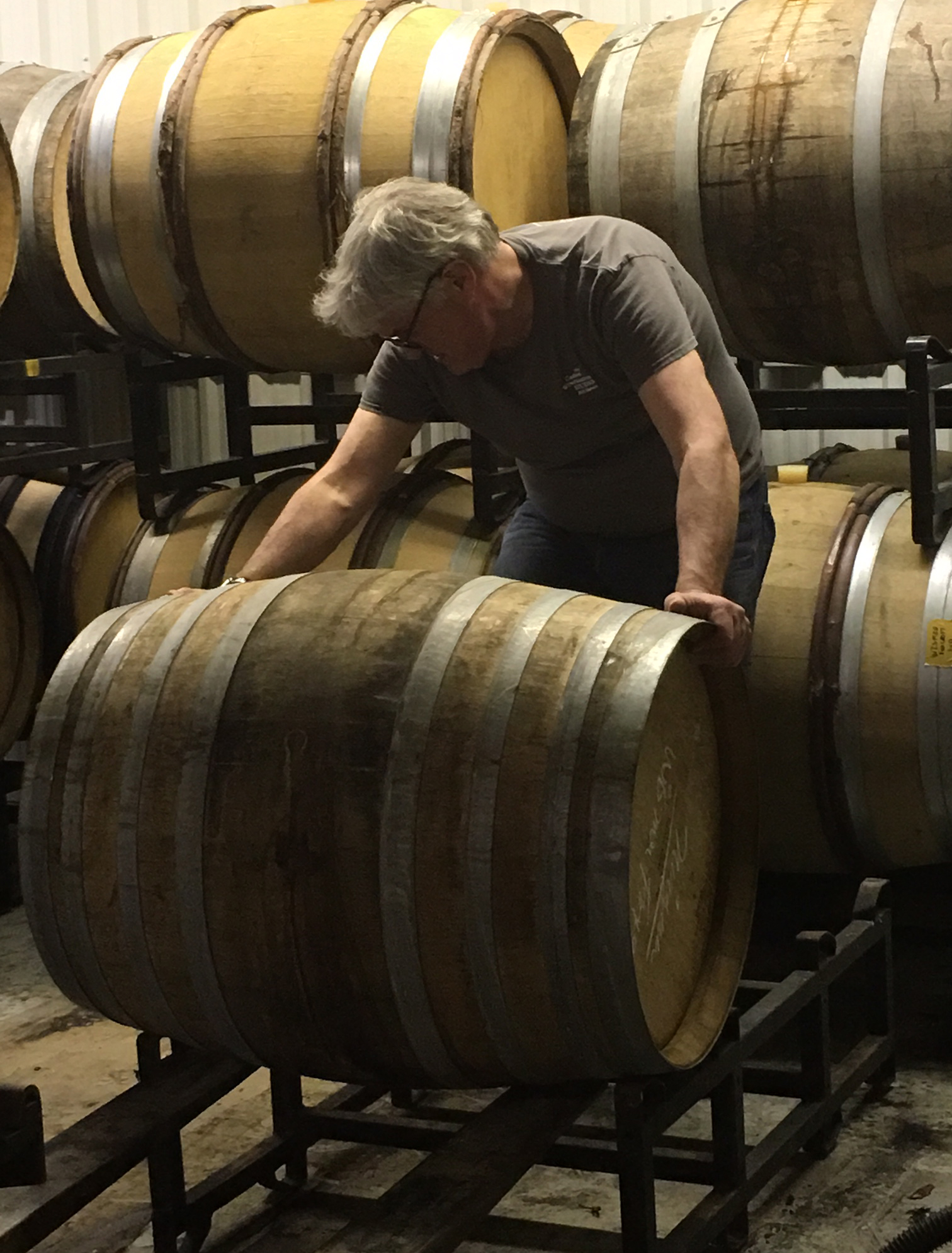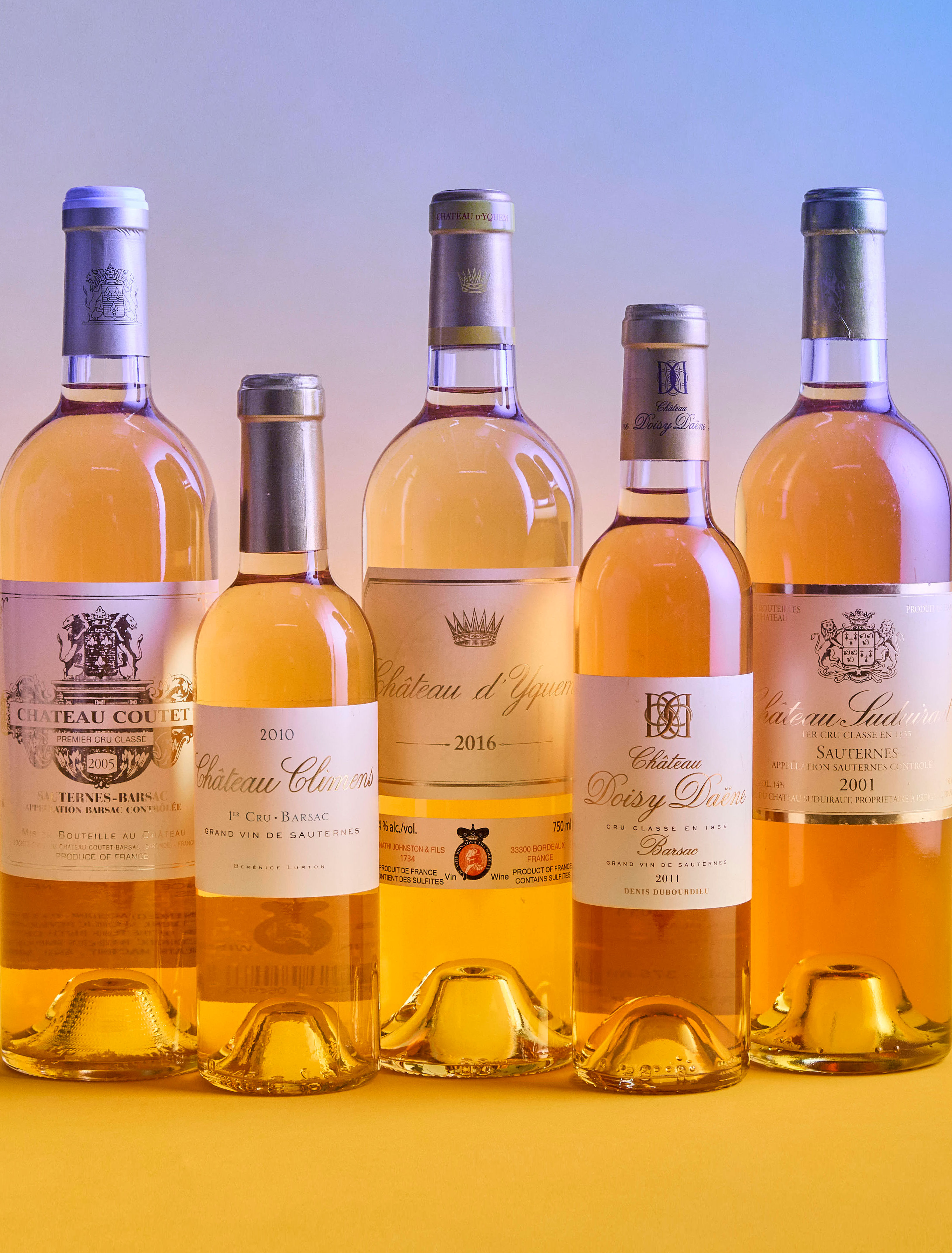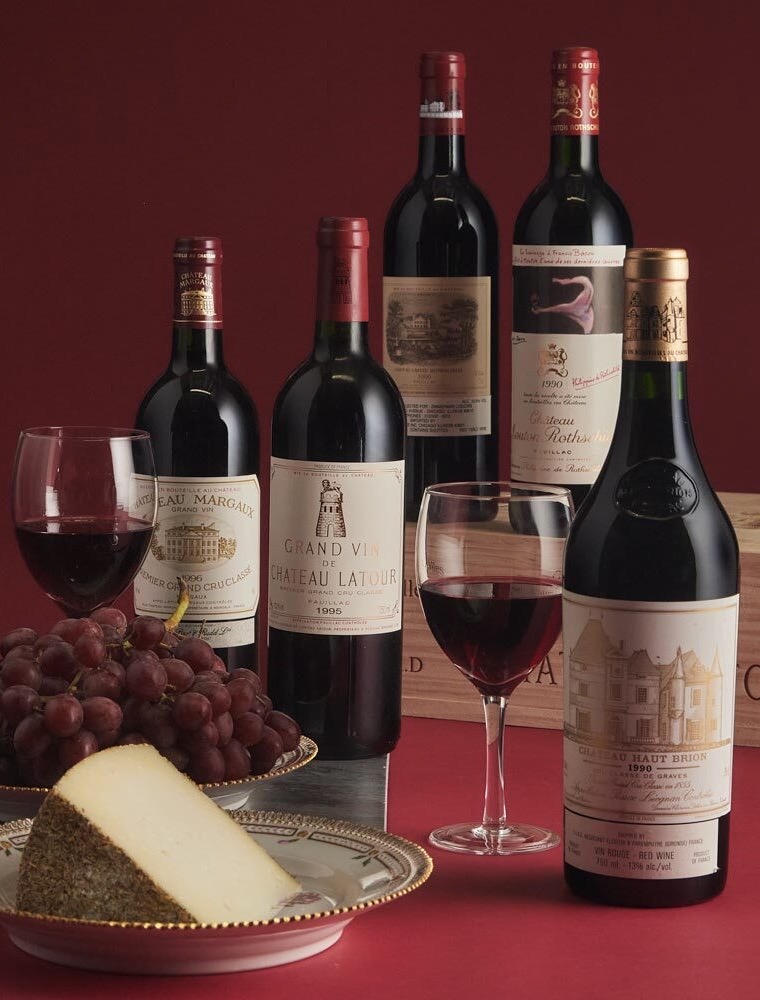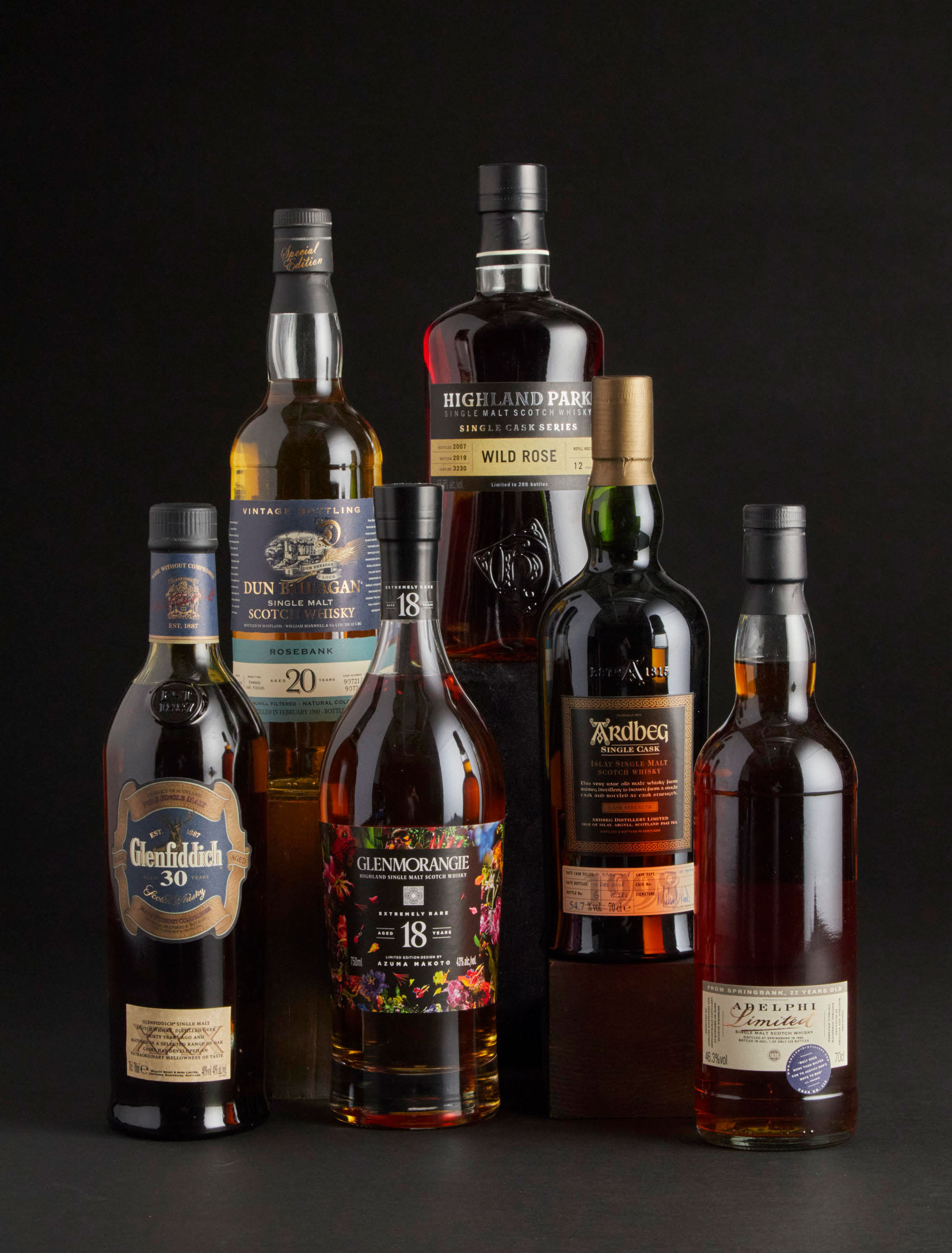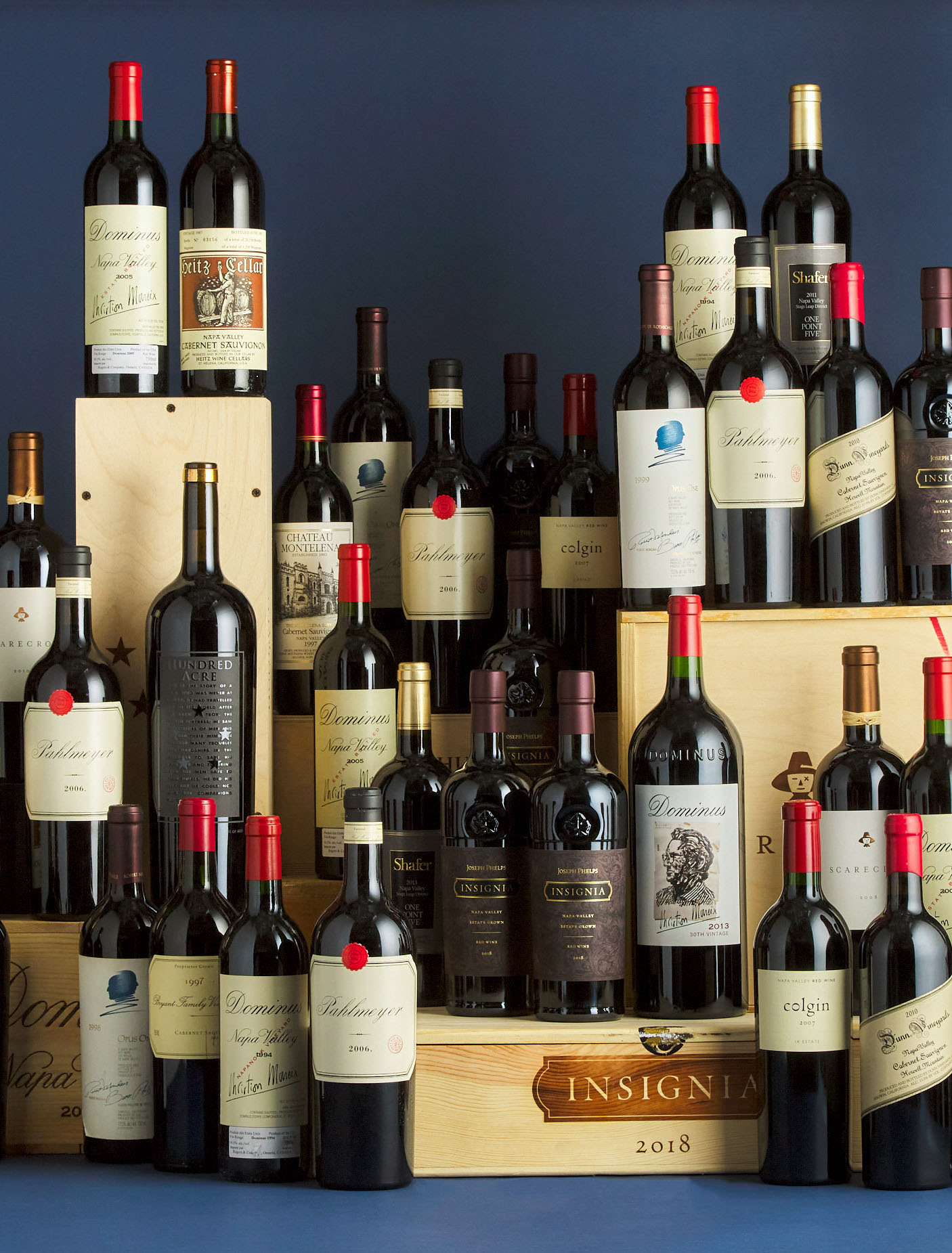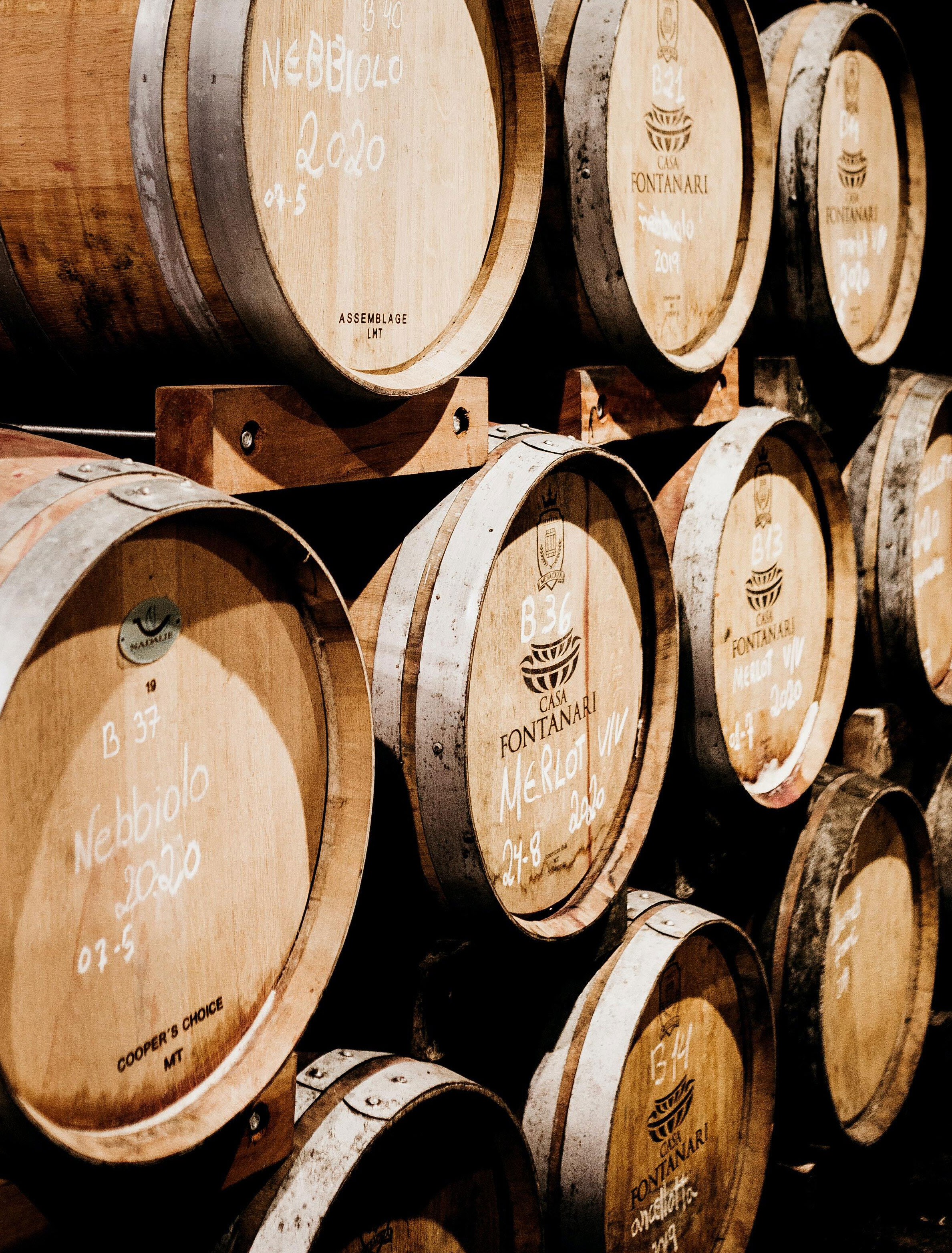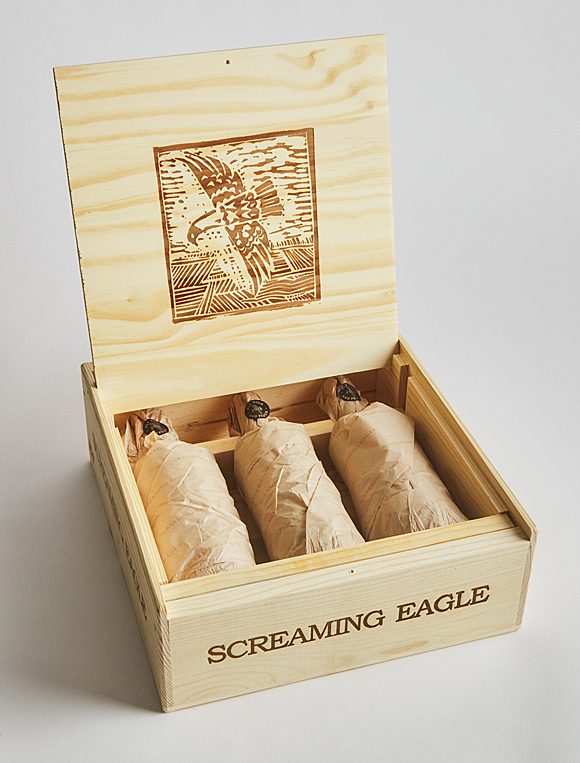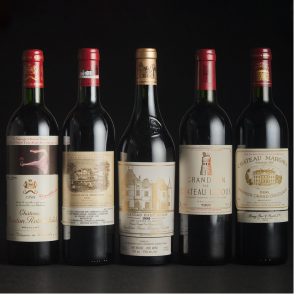
Wanting to highlight—and market—the best French wines at the 1855 Paris Universal Exposition (Exposition Universelle), Napoléon III requested a definitive ranking of the wines in France, specifically those from Bordeaux. The Chamber of Commerce in Bordeaux asked a collective of wine merchants to draw up “an exact and complete list of all the red wines of the Gironde that specifies in which class they belong.” Using price rather than a blind tasting as their guide, it took the merchants two weeks to submit their list. Known as the Grand Crus Classés (Great Classified Growths), 58 châteaus were included, and were divided into five categories. Only four wines were considered to be First-Growths (Premier Cru): Château Lafite Rothschild, Château Margaux, Château Haut-Brion, and Château Latour. There were 12 Second-Growths, 14 Thirds, 11 Fourths and 17 Fifths. Thousands of estates were actively producing wine at the time, so inclusion on the list was a mark of great prestige. All of the wines came from the Left Bank Médoc region with the exception of Château Haut-Brion, which was produced in Graves (a region which was reclassified as Pessac Leognan in 1987.)
The list of Grand Crus Classés remained virtually unchanged for over 100 years. Today there are 61 châteaus included, a number which has increased only because of divisions in the original estates: per French rules, if an estate can trace its origins to the 1855 list, it is allowed to count itself among the Grand Cru Classés. The only true revision to the list occurred in 1973, when after years of campaigning, Baron Philippe de Rothschild managed to upgrade Château Mouton Rothschild from Second to First-Growth category, bringing the total number or wines classified as Premier Cru to five.
Bordeaux is the most classified wine region in the world. Subsequent classifications in the region were implemented after 1855, including (in order of seniority) the Graves classification, the Saint-Émilion classification, the Crus Bourgeois classification, and the Crus Artisans classification.
Some critics argue that the 1855 classification is outdated, notably for its exclusion of the incredible wines being produced on the Right Bank—here’s looking at you, Pétrus! If the competition was held today, there would undoubtably be some movement in the rankings, both up and down. It is worth remembering that while First-Growth wines are a safe bet, this should not preclude buying wines from the other tiers or outside the ranking system entirely. Similarly, a Fourth-Growth wine is not necessarily better than a Fifth-Growth wine in today’s production. While the classification has not changed in decades, many Bordeaux wineries—ranked or unranked—make incredible products which are worth your while, often at a more modest price point.
The 1855 classification has held enormous sway over the market, despite the classified wineries making up for only 5% of the total vineyard area of Bordeaux. Being ranked “number one” has allowed the top five to charge higher prices, which in turn allows them to reinvest more money into their winemaking. For buyers, seeing “Grand Cru Classé” on a label indicates a high degree of quality and signifies great aging potential – most should be cellared for at least five years before opening. A safe investment, First-Growth wines exhibit steady appreciation year over year—don’t take our word for it, look at our auction results for yourself!
The Five Premier Cru Wines
Château Lafite Rothschild:
With 276 acres of vines in the northern part of Pauillac appellation, this winery is situated on a plateau composed of deep gravel and clay soils. This composition allows water to be retained in hotter summer months, while the gravel ensures that water does not stagnate. Vines are forced to dig deep into the soil in search of water, concentrating the fruit. Gravel also retains heat, which helps ripen the grapes as well as contribute minerality to the wine.
Many of the vines at Lafite are over 50 years old. The current blend is predominantly Cabernet Sauvignon, around 8% Merlot, and 3% Cabernet Franc. Wines are designed to be soft and deliberately low in alcohol, around 13% ABV. Lafite has notes of stone fruit, blackberry, tobacco, spice, hazelnut, cigar and salinity. The metaphor often used for Lafite wine is “an iron fist in a velvet glove.” Lafite stands up at auction, with a single 1787 bottle thought to belong to Thomas Jefferson—considered to be America’s first serious oenophile—fetching approximately US$156,000 (approximately $440,000 in today’s US dollars) at Christie’s in London on December 5, 1985.
Current owner: Bought in 1868 by Baron James Mayer Rothschild, part of the French branch of the Rothschild dynasty, the estate remains in the family.
Château Latour
Located in the heart of Médoc, all of Latour’s 229 acres have been Certified Organic since 2019. The success of Latour’s Grand Vin is credited to its “L’Enclos” vineyard, 113 acres of walled enclosure. Dating back to at least the 17th century, L’Enclos is positioned close to the Gironde estuary, which creates a microclimate a few degrees warmer than the rest of the Latour land. Latour’s vineyards are cultivated biodynamically, representing one of the largest areas of biodynamics in Bordeaux. Of the five First vineyards, Latour prides itself on being the most organic. Positioned on a mix of gravel and clay, Latour’s site is perfect for Cabernet Sauvignon, which represents 90% of the Grand Vin. The other 10% is a blend of Merlot and Cabernet Franc. Latour boasts old vines, with an average age of 60 years. The château’s wine is robust and intensely aromatic, with superb length and complexity. The tannins are precise and powerful, and the wine deepens as it ages. Connoisseurs consider the new biodynamic style to have enhanced these celebrated characteristics, which makes Latour an excellent addition to your cellar.
Current owner: The Pinault family—the same one that runs luxury conglomerate LVMH.
Château Margaux
In the 1855 ranking, Margaux was the only winery to receive a perfect score. Located in the southern Médoc, Margaux sits on a 654-acre estate, 252 of which are under vine. The vineyard dates back to the 16th century, and is renowned for its scenic views and impressive château. Margaux divides its holdings into four parcels, each with its own specific viticultural procedures. The majority of the grapes are Cabernet Sauvignon, followed by Merlot, Cabernet Franc, and Petit Verdot. The most common word used to describe Margaux is “elegant,” and the primarily Cabernet Sauvignon-based Grand Vin is designed to express its soft, velvety tannins.
Current owner: The estate has changed hands several times over the centuries, but has been in the Mentzelopoulos family since 1976 when it was bought by French grocery and finance group Félix Potin, headed by André Mentzelopoulos.
Château Haut-Brion
Haut-Brion stands apart from the first-Growth pack. Haut-Brion is the only first-Growth wine not located in Médoc, calling the Pessac-Léognan region (formerly classified as Graves) home. The oldest estate of the top five, Haut-Brion can boast of being the earliest area in Bordeaux to have been recorded as being under vine as far back as the 16th century. Situated on loamy soil on gravelly, rocky rolling hills, Haut-Brion is actually bordered by suburban sprawl, unlike the other four first-Growth vineyards, which border the Gironde estuary. Also unlike the other four first-Growths, Merlot is the main grape used in the château’s Grand Vin. Usually accounting for 50%, Merlot is accompanied by 40% Cabernet Sauvignon, and 10% Cabernet Franc. Haut-Brion is celebrated for its firm tannins and well-balanced structure, with a rich texture and subtle aromas. Thomas Jefferson was a fan, and imported bottles of Haut-Brion, making it the first first-Growth to be brought to America.
Current owner: Prince Robert of Luxembourg, grandson of the American Clarence Dillon, who bought the chateau in 1935.
Château Mouton Rothschild
The newest addition to the first-Growth pack, Mouton Rothschild is the only wine to ever buck the 1855 classification. Rising in the ranks from Second to first-Growth in 1973, this change in status was due to decades-long campaigning by its powerful owner, the legendary winemaker Baron Philippe de Rothschild. Located in Pauillac, Mouton Rothschild is situated on 200 acres of sunny plateau, consisting of deep gravel soil with a chalk subsoil. The vineyard sits at the highest point in Pauillac, and is divided into the Le Grand Plateau and Le Plateau des Carruades. The dominant grape is Cabernet Sauvignon, which can account for up to 90% of the Grand Vin. Mouton Rothschild’s wine is the most intense and richly tannic of the first-Growths, exhibiting minerality alongside cocoa, camphor, cigar and sweet fruit notes, with a velvety, succulent mouthfeel. The château has also distinguished itself by commissioning celebrated artist to design its annual label. Since 1945 this tradition has included artists such as Miró, Picasso and Dali.
Current owner: Bought by the British-born Baron Nathaniel de Rothschild in 1853, the estate has stayed in the family ever since. It has been speculated that Mouton Rothschild was excluded from the 1855 first-Growth classification due to its being owned by an Englishman rather than a Frenchman.
About the Auction
Online from November 27-December 5, this Fine Wine auction concludes our eighth year of offering the best bottles and collections to the secondary market. This instalment will entice bidders with 100-point Classified Bordeaux, a selection of rare Burgundies, a vertical of Ornellaia (2007-2018), a vertical of Lafite Rothschild (2001-2006), many wines in original wooden cases, assorted large formats, and a 2007 Duclot Bordeaux Collection. There is tremendous opportunity for all oenophiles with highlights from every wine region.
Find your favourite wines by vintage, region, cru or rating using our WineFinder tool.
This auction is also available to view in a Google spreadsheet or browse the wine index (PDF).
For more information please contact us at [email protected].
Related News
Meet the Specialists
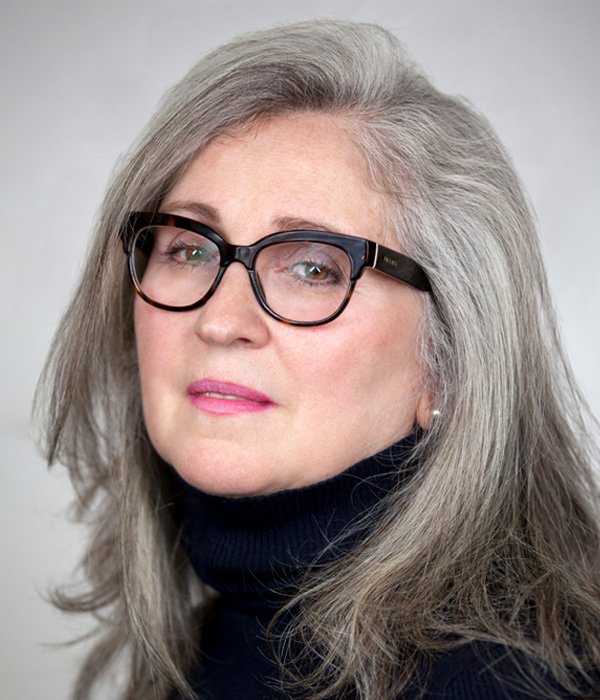
Joann Maplesden
Senior Specialist

Devin Hatfield
Specialist



